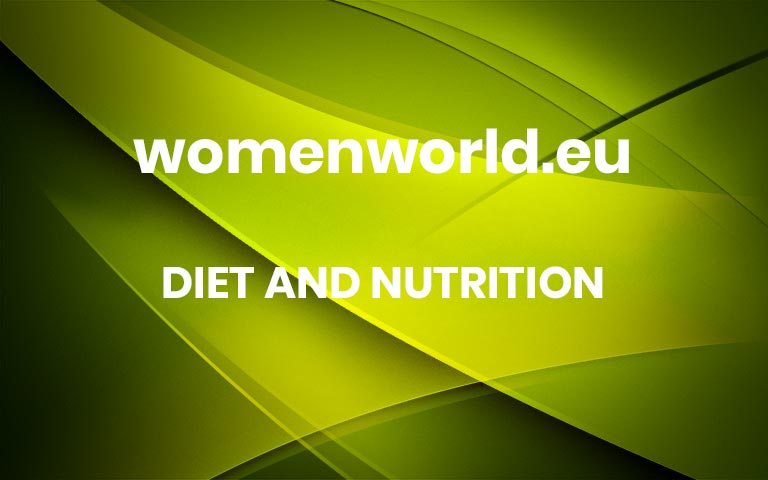Your immune system truly has no days off. Whether you’re fighting off a cold or recovering from an infection, it’s always kickin’ in high gear. But believe it or not, nutrition has a major impact on your immunity and there are some easy (and delicious) ways to keep your immune system in top shape. Enter: vitamins for immune system support.
“Nutrients from our diet including vitamins, minerals, and macronutrients like proteins, fats, and carbohydrates, are required for immune cell production and overall immune health,” says Stacey Simon, RDN, of Top Nutrition Coaching.
Can you eat your way to a better immune system?
There is no such thing as an “immunity diet,” but consuming a variety of vitamins and minerals can help prevent nutrient deficiencies that can lead to a decline in immune function. “Rather than cherry-picking or adding nutrients here and there, an overall balanced diet rich with a variety of fruits, vegetables, lean protein, healthy fats, and whole grain can help us consume adequate amounts of specific nutrients to prevent deficiency and keep our immune systems strong,” says Simon.
Do supplements play a role?
Now you may be thinking, What about supplements? While there is certainly a time and place for them like if you are pregnant, struggling with nutrient deficiencies, or recovering from an illness or surgery, Simon always recommends food first. “Think of supplements as a tool to fill gaps in an otherwise healthy and nourishing diet,” she says.
Because supplements are not regulated by the FDA, and too much of a nutrient can be detrimental, always talk with your doctor before use. “Unless you are deficient in a nutrient, oftentimes there is no need to supplement with a mega dose,” notes Simon. “The body actually absorbs and utilizes nutrients in food more efficiently.”
And while nutrition plays a role in immune health, they are other factors at play too. Things like sleep, stress, certain medications, autoimmune diseases, and genetics also affect your immune function. “We have to make sure we’re keeping up our defense on all of these fronts,” says Simon.
If you want to keep your immune health in tip-top shape, try incorporating these 10 essential vitamins and nutrients into your diet.
Meet the expert: Stacey Simon, RDN, is a nutritionist with more than nine years of clinical experience. Her special focus is on managing chronic diseases and maintaining general wellness for older adults.
1. Protein
Protein is often associated with building muscles and keeping you full between meals, but it also plays a major role in wound healing, recovery, and cell building, says Simon. “Amino acids, or the building blocks of protein, help maintain immune system function through helping produce immune cells.”
Plus, many protein sources offer a lot of “bang for your immune system buck,” because they contain a ton of other crucial vitamins, minerals, and micronutrients, adds Simon. It’s a win-win!
“I suggest always going for whole or fresh food first, so you can get real sources of protein,” she says. If you are looking for on-the-go high-protein snacks, look for something with that’s as close to the real deal as possible and doesn’t have a bunch of additives and artificial colours. Pro tip: If you read the ingredient list and are unsure what something is, it’s probably best to steer clear.
Here are some examples of whole foods that are high in protein.
Eggs
Chicken
Lentils
Fish
Lean beef
Plain Greek yoghurt
2. Vitamin C
You’ve likely heard that vitamin C is important for immune function and shortening the duration of a pesky cold, but it actually does a whole lot more. Vitamin C also plays a tremendous role in wound healing, which is a huge part of maintaining your immune system by keeping your skin barrier intact, says Simon.
It’s also a powerful antioxidant that reduces inflammation in the body, ultimately decreasing our risk of developing diseases and feeling sick.
While orange juice may seem like the ultimate vitamin C source, Simon also recommends eating the following foods to get your fill.
Tomatoes
Potatoes
Sweet melon
Red bell peppers
Grapefruit
3. Vitamin D
Vitamin D improves the function of immune cells by reducing inflammation in the body and decreasing the risk of infection, says Simon. But here’s the thing, the best source is actually not food—it’s sunlight. Vitamin D is a fat-soluble vitamin, meaning it can dissolve in fats and oils and be stored in the body’s fatty tissue and liver. To help maintain healthy levels, aim for at least 15 minutes of sun exposure a day, according to Harvard Health.
If you live in a colder climate or can’t get sun exposure on a regular basis, it’s important to supplement through food. “Vitamin D is an area where you might not necessarily feel any deficiency, even if you’re mildly deficient, but it’s one of those things that’s good to supplement with food to close the gap,” says Simon.
Foods high in vitamin D include the following.
Salmon
Orange juice fortified with vitamin D
Fortified cereal
Dairy or plant milk fortified with vitamin D
Tuna
Sardines
Egg yolks
4. Vitamin E
This is another fat-soluble vitamin with powerful antioxidant properties to help support immune cell production. “Vitamin E helps support T-cell growth, or the white blood cells that play a major role in immune functioning,” explains Simon. “When we think about cells in the body that defend and fight off pathogens, vitamin E helps to support the growth of those defense T-cells.”
Add these vitamin E foods to your plate to help boost immune health.
Eggs
Nuts
Sunflower seeds
Red bell peppers
Spinach
Kale
Arugula
5. Zinc
Think of zinc as an immunity superstar. Not only does it play a major role in wound healing, but it also aids in the development of immunity cells by impacting the growth of T-cells, says Simon. And while some studies show that zinc can help shorten the length of a common cold, there’s no need to overdo your zinc intake. “Most people are able to maintain their zinc levels within a healthy range by eating a normal, balanced diet,” says Simon.
You’ll find zinc in many of the foods you’re probably already eating like the following.
Oysters
Red meat
Seafood
Beans
Nuts
Fortified cereal
Chicken
6. Iron
“We often think of iron playing a huge role in our energy levels and how our body feels, but it also builds up those immune cells, allowing them to reach full maturity so they can go off and do their job,” says Simon.
Iron is also a major component of hemoglobin (the protein in red blood cells that carries oxygen from your lungs to the rest of your body), so significant bleeding can cause your iron levels to drop. Because of this, research suggests it’s especially important for women who menstruate to maintain iron levels and eat iron-rich foods.
Try incorporating the following high-iron foods into your diet.
Beans
Lentils
Chicken
Lean beef
Oysters
Fortified cereal
7. Selenium
Selenium acts as a powerful antioxidant that can help reduce inflammation in the body, and studies show it promotes heart health, optimizes immune functioning, and may even help prevent cancer. While a generally balanced diet is usually suitable for your daily selenium intake, low selenium levels have been shown to reduce immune function.
Stock up on some of the following selenium-rich foods.
Brazil nuts (Fun fact: Eating one Brazil nut a day can help you meet your daily requirement, says Simon.)
Salmon
Lean beef
Chicken
Turkey
Tuna
Shrimp
Mushrooms
8. Copper
Inflammation is a sign that your body is working overtime to heal or repair itself, but copper plays a huge role in minimizing its effects by neutralizing free radicals, says Simon. Research shows that free radicals are unstable atoms in the body that can damage cells and cause illness, but copper has antimicrobial properties to reduce their presence and ultimately calm inflammation.
Maintaining healthy copper levels is a bit of a balancing act, however, because too little copper can suppress your immune function, yet too much copper can be dangerous and lead to cell death. But no need to overcomplicate it because copper toxicity is rare, stresses Simon. “Just eating a balanced diet is a good way to make sure we are getting enough copper and remaining within that healthy range,” she says.
Focus on a varied diet by eating some of the following.
Unsweetened baker’s chocolate
Nuts
Sunflower seeds
Potatoes (with the skin)
Shiitake mushrooms
Oysters
9. Probiotics
You’ve likely heard probiotics are the good bacteria in your digestive system, but they also play a role in immune health, says Simon. Studies have shown that probiotics promote natural antibodies in the body by boosting immune cell production and fighting off infection. Some research even suggests that probiotics can prevent respiratory tract infections like the cold or flu and reduce urinary tract infections in women.
Foods high in probiotics include the following.
Kimchi
Sauerkraut
Kombucha
Tempeh
Yoghurt (with live active cultures)
Kefir
This article was first published in womenshealthmag.com More



